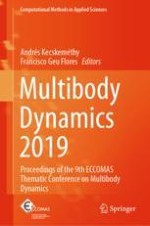In this work, outstanding, recent developments in various disciplines, such as structural dynamics, multiphysic mechanics, computational mathematics, control theory, biomechanics, and computer science, are merged together in order to provide academicians and professionals with methods and tools for the virtual prototyping of complex mechanical systems. Each chapter of the work represents an important contribution to multibody dynamics, a discipline that plays a central role in the modelling, analysis, simulation and optimization of mechanical systems in a variety of fields and for a wide range of applications.
